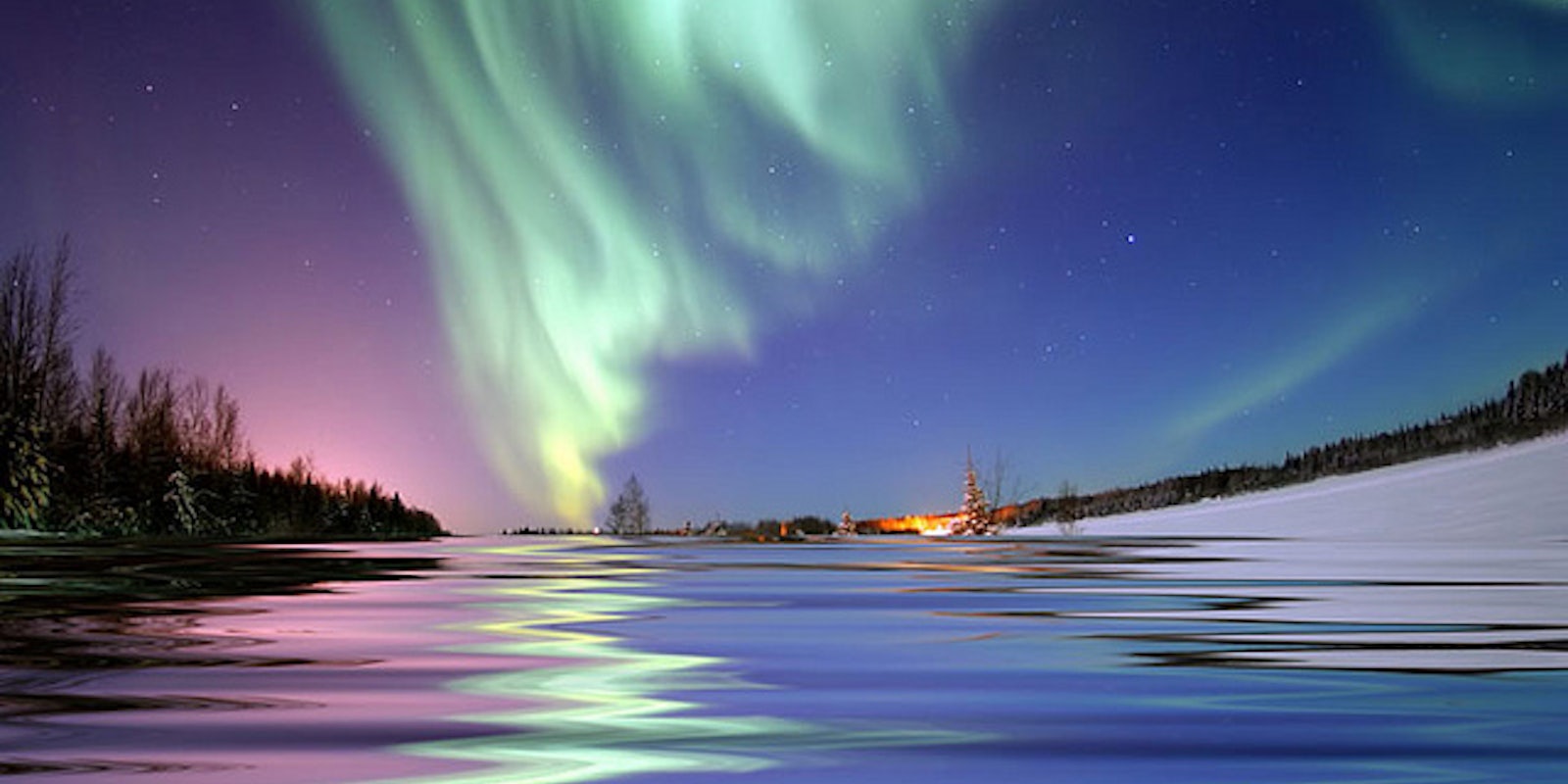Good news! The solar storm that hit Earth on Thursday morning did not fry the world electrical grid and set civilization back several centuries. (If it had, you wouldn’t be reading this online, would you?)
Future historians interested in learning about the Great Solar Storm of March 2012—from the initial discovery of the giant solar flare to photos of the resulting auroras as they shone throughout earth’s magnetosphere—will be able to read the whole thing on Twitter.
Astronomers discovered the solar flare on Tuesday, and mainstream outlets pounced on the news: “Large solar flare occurred this evening. May cause interruptions in wireless communications and active auroras next few days.”
MSNBC’s @BreakingNews account pessimistically ignored the upside of pretty auroras: “Huge solar flare heading toward Earth, may disrupt satellites, power grids, airplanes.”
But it didn’t.
As electrically charged particles from the solar flare interacted with the Earth’s magnetic field on Thursday morning—as the solar storm struck, in other words—Phil Plait @BadAstronomer tweeted, “Spaceweather.com reports storm hit at 11:00 UT & was weaker than expected. Still, if you live at high latitude look for auroras tonight!”
Actually, those who lived in high enough altitudes didn’t even have to wait for nightfall. One woman, who presumably lives too far south to see the auroras herself, tweeted a photo taken in Norilsk, Russia, of a green aurora bright enough to be visible in full daylight: “The auroras are starting to hit from Monday’s sun explosion!!! I wish I could see em! I will one day! Enjoy Russia!”
Solar flares can burn out electronic items, or even the entire electrical grid, if they’re powerful enough—a solar storm in March 1989 caused a blackout through almost the entire Canadian province of Quebec, and auroras visible as far south as Cuba.
In the solar storm of March 2012, the auroras were less widespread and the damage reports (at least on Twitter) were mainly tongue-in-cheek. Josh Groban complained: “Last night’s solar flare changed the key of my dial tone, turned my electric toothbrush timer to ‘infinity’ and set me up a hotmail account.”
Others found the lack of genuinely disrupted communications downright annoying: “What use is a solar flare if it can’t even interrupt party political broadcasts. Huh?”
Turns out solar flares aren’t quite as cool as certain comic books might lead you to believe: “I assumed this solar flare would give me super-powers. Maybe it’s a subtle one, like the power to need this second breakfast bagel?”
However, as of Thursday evening the solar storm was still ongoing, so perhaps it’s too early yet to say “it passed without causing damage.” One excited young girl reported a power outage which might or might not be sun-related: “Solar flare!!! Lol power went out at school! And maybe aurora borealis tonight!! #sciency #excited”
Will you be able to see the aurora from your own window tonight? That depends on where you live. The Huffington Post tweeted a collection of links explaining where auroras are predicted to shine in the northern hemisphere Thursday night. But even the brightest solar storm can be overlooked if there’s another storm at the same time. As one amateur astronomer mournfully tweeted, “I Hope it stops raining so we can see the northern lights from the solar flare tonight.”
Photo by walkadog
